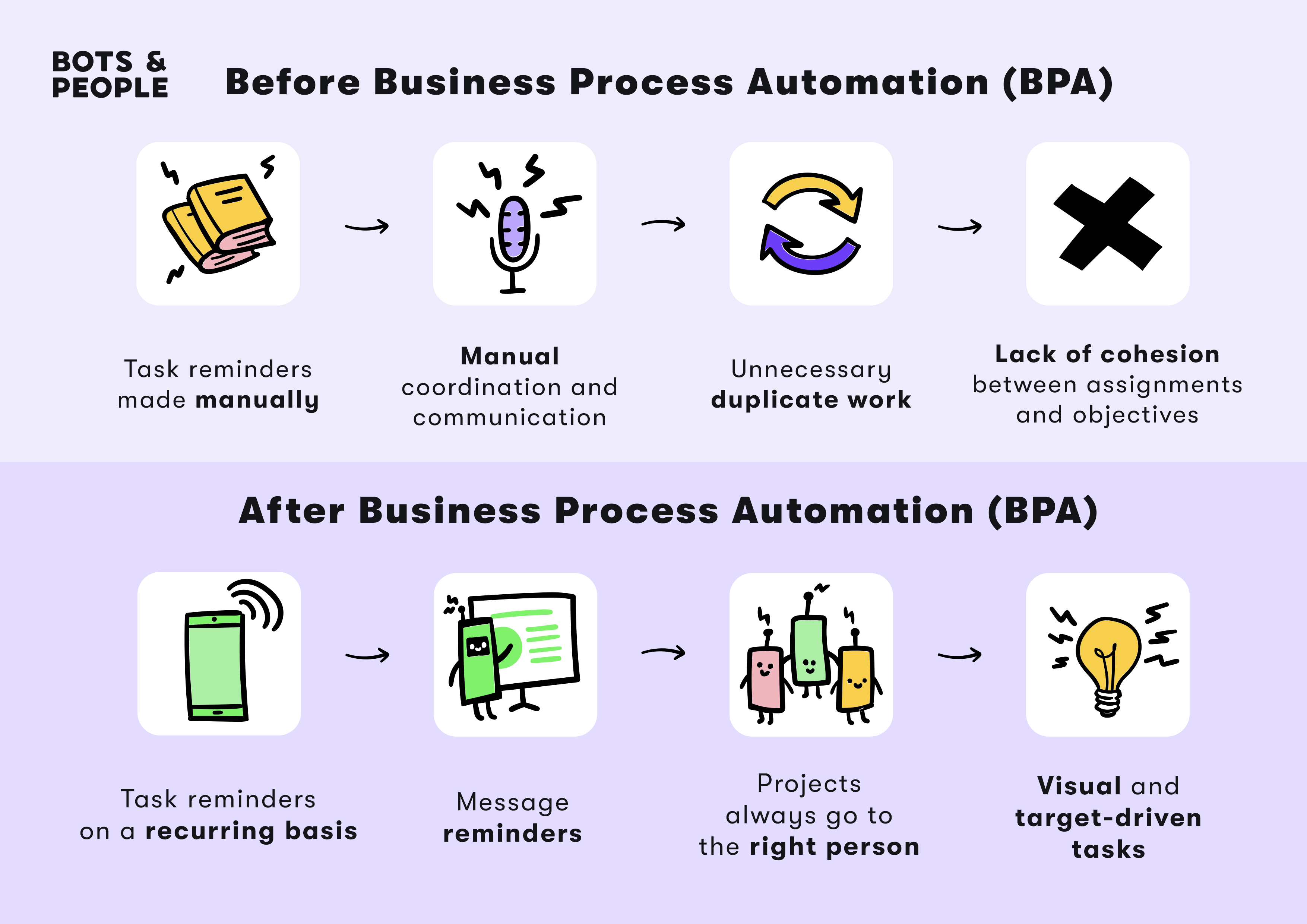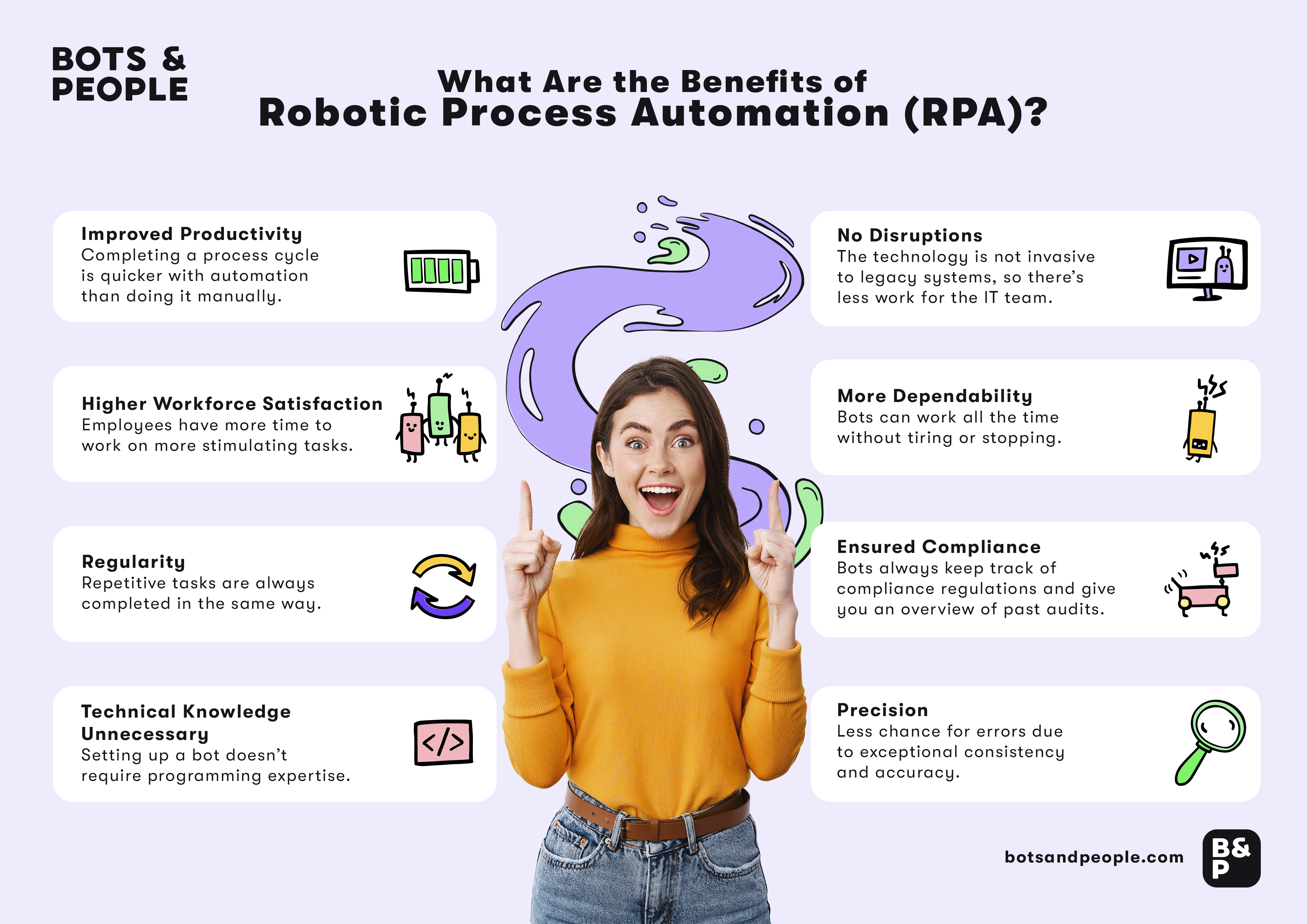Robots are smarter, more powerful and will soon completely replace human labor - such and other theses paint a picture with rather negative connotations for the future of automation in industry and business. You also hear such campfire stories about Robotic Process Automation (RPA) again and again, peppered with half-truths and long-lived myths. In the last Bots and People podcast, industry experts Oliver and Nico, together with their guest Andreas Zehent, therefore went in search of the biggest RPA myths. Below we have summarized excerpts from the conversation.
RPA Myth number 1
All people become unemployed because robots replace human employees
Andreas: This is really a big RPA myth for me. When you build an RPA bot, you can rarely automate an entire employee. An employee doesn't do the same action in series all day long, but has many other activities. RPA means automating steps that employees usually don't enjoy, such as copy-pasting 200 rows from an Excel spreadsheet. The activities that require thought and judgment will remain.

RPA Myth number 2
Robots are always 100 percent accurate
Oliver: If you look at a process that you could potentially automate, it actually has to be error-free in itself. Otherwise, you won't get what the user expects. The skills of the developer are also crucial.
Nico: But a robot only executes what a human has told it. I would even say that it is always 100% accurate, but then it also executes erroneous thoughts of a human.
Andreas: Yes, classic RPA also has its pitfalls. You have to think about how exactly the process is going to work beforehand. There are many exceptions that you may not be able to cover directly, and I have to be very clever about how I manage the whole issue. If the robot doesn't know the exception, then it just does standard. It is only as good as it is defined to be.
RPA Myth number 3
RPA developers do not need programming skills
Andreas: Well, for me there is desktop automation, where someone gets a bot as a personal assistant to help them. The second topic for me is RPA as part of a larger initiative in conjunction with workflows, OCR or other intelligent technologies of any kind. Those are two different sites for me. You need some understanding of what you're doing for the personal case, and of course in the larger case you need IT skills: You have to build it in a scalable way and implement it cleanly. I come in and plug it in - it's not quite that simple.
Oliver: That is certainly also due to the marketing campaigns of the RPA developers, that it is a low-code or no-code tool that anyone can use quite easily. I can also confirm that it's not that simple. However, I do believe that someone who perhaps has no prior programming knowledge can familiarize themselves with such a tool.
Andreas: Yes it can and you can also learn it relatively quickly. You don't have to be a full-stack developer. Of course, low-code forms of automation help and will also get better in the future.
RPA Myth number 4
Robots can be left unattended 24/7
Nico: That is also one of the beliefs that is often conveyed: You program it, plug it in, and then it just runs in the background. But of course there are also supervised robots that can be useful. For example, if a call center employee wants to make a database query, for example, to get all complaints spit out, then that is a supervised robot.
Oliver: Exactly, human interaction is not only useful at certain points, but also desirable. There are just things that you can't let the robot decide on its own.
Andreas: It depends very much on the process. There are many bots that can really run in the dark processing in the back of the server. But of course there also needs to be monitoring and quality assurance.
RPA Myth number 5
The use of RPA is always about cost savings only
Andreas: It's very much about efficiencies, and for me, efficiencies and cost reduction are two different things. Of course, you can create efficiencies very well through bots, but you can also do a lot of other things, for example, improve the customer experience. From that point of view, I wouldn't always reduce the bot to the topic of savings.

RPA Myth number 6
Automation is cheaper than human labor
Oliver: That also depends on the process. So for complex processes that are super complex to maintain, I would say that they are not cheaper than a human worker.
Nico: It can also make sense to let a process run for a while before thinking about automation. Optimizing the process in the service delivery center first and then automating it later will probably be cheaper in the long run.
Andreas: I have an imaginary conversation with Walter Obermeyer in my head, who was in your first episode, who would probably say something like: "Guys, I don't want us to replace people. I want my digital workers to work with your physical workers." I think in the future, every single employee will have to change in a way that they can interact with technology differently.
RPA Myth number 7
Process Automation (Low Code) = RPA
Andreas: RPA is everywhere, but low-code is broader. There are very many technologies that you can get involved with: Process orchestration, workflows, decoupling of decisions... RPA is a core building block of that, but I find a workflow that guides a process is an absolutely important basis for scalability of RPA. Process mining also plays a role.
Nico: I have another somewhat provocative question: Is RPA actually just a transitional technology until all companies have sorted out their tools in such a way that they no longer need it at all?
Andreas: It's not something for the ages and RPA has a complete raison d'être and business value and that's important. RPA will be around for a long time, it will grow before any other technology can come along at some point. In the long run, everything is in transition.
RPA Myth number 8
Everything can be automated somehow
Oliver: The word "somehow" alone bothers me, because that already shows the lack of knowledge about the exact process. That brings us back to the point that you should first check the process and that a streamlining is perhaps better at the beginning.
Nico: Maybe I can even automate everything somehow, the only question is what comes out of it. If I build a chat bot to simulate a therapy conversation, I don't know if that will help the patient.
Andreas: I completely agree. I actually think you can do a lot. Does it make sense? There are questions there for me. That leads on to the next RPA myth:
RPA Myth number 9
When processes are to be automated, technology is crucial
Andreas: No, it is crucial what you want to achieve. It is crucial that you know why the process exists and what the outcome of this process should be. And this should happen with the human being and not against the human being or bypassing the human being. There are infinite ways to solve problems and if you can find a cheap, fast way to help people, then I think you are doing the right thing.
RPA Myth number 10
The use of technologies to automate processes is expensive
Oliver: Sometimes you can't even measure what is expensive and what is not expensive. Because if I relieve a person of repetitive tasks, giving them more time to think about how they can open up new areas of business, then that's something that at first glance can't be directly attributed to automation.
Nico: And if you don't equate technologies for automation with RPA, then an application of a tool like Mailchimp, for example, can also be called automation and these are very favorable variants. If letters are sent out beforehand and the whole thing is then automated in Mailchimp, then that's a great, efficient project.
Andreas: You have to make an initial investment. But there is also no return on investment without investment. And you know what's even more expensive: If you fall behind as a company and can no longer interact strategically because you've missed the boat.
People remain at the center
Automation is not just about cost savings, but about meaningful, steady transformation that is people-centric. Good management is important to automate in a meaningful way. And ultimately, it's always about supporting people, not displacing them.









